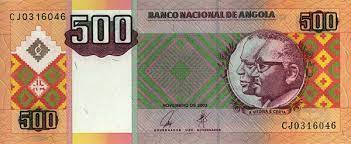Angolan kwanza and Travel Visa Online

The kwanza (sign: Kz; ISO 4217 code: AOA) is the currency of Angola. Four different currencies using the name kwanza have circulated since 1977. The currency derives its name from the Kwanza River (Cuanza, Coanza, Quanza).
Angola First kwanza, AOK, 1977-1990
Kwanza was introduced following Angolan independence. It replaced the escudo at par and was subdivided into 100 lwei. Its ISO 4217 code was AOK.
Angolan Second kwanza, AOA, 1999–
In 1999, a second currency was introduced simply called the kwanza. It replaced the kwanza reajustado at a rate of 1,000,000 to 1. Unlike the first kwanza, this currency is subdivided into 100 cêntimos. The introduction of this currency saw the reintroduction of coins. Although it suffered early on from high inflation, its value has now stabilized.
Angolan kwanza and History
In 1990, the novo kwanza was introduced, with the ISO 4217 code AON. Although it replaced the kwanza at par, Angolans could only exchange 5% of all old notes for new ones; they had to exchange the rest for government securities. This kwanza suffered from high inflation.
Angolan kwanza counting system
The masses rarely use the dinar as such, but the franc (officially the centime; one hundredth of a dinar) and the doro (one twentieth of a dinar). In traditional selling places such as the vegetable market or in the case of street vendors, prices are displayed in francs, in more modern shops the prices are displayed in dinars but the franc is used in speech.
Angolan kwanza Coins
Angolan kwanza Banknotes
Kwanza reajustado, AOR, 1995–1999
In 1995, the kwanza reajustado (plural kwanzas reajustados) replaced the previous kwanza at a rate of 1,000 to 1. It had the ISO 4217 code AOR. The inflation continued and no coins were issued.





 |
|  |
|  |
|  |
| 